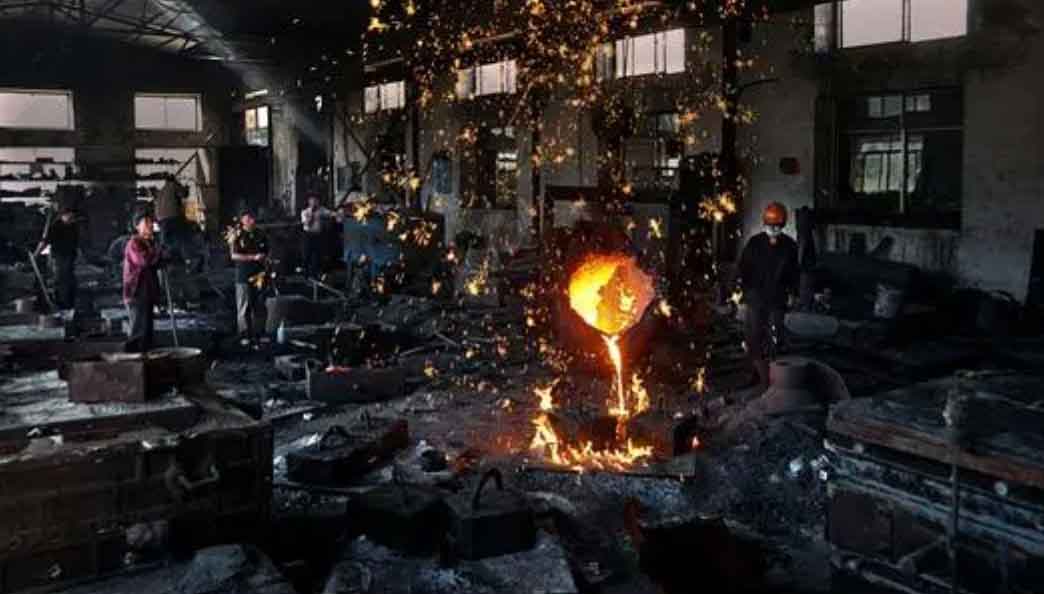
Exploring the capabilities of casting manufacturer in China involves examining various aspects that highlight the region’s strengths and expertise in the casting industry. Here’s a comprehensive overview to help you understand this sector better:
1. Types of Casting Processes
Casting manufacturer in China offer a wide range of casting processes, each suited to different production needs and material characteristics:
- Sand Casting: Widely used for large metal components, it’s economical for low-volume production.
- Investment Casting: Known for high accuracy and excellent surface finish, suitable for complex geometries.
- Die Casting: Ideal for high-volume production of non-ferrous metal parts like aluminum and zinc.
- Permanent Mold Casting: Provides good surface finish and dimensional accuracy for small to medium parts.
2. Material Specialization
Casting manufacturer in China work with a broad array of materials:
- Metals: Iron, steel, aluminum, copper, and alloys.
- Plastics: For injection molding which is technically a form of casting.
- Special Alloys: Including titanium and nickel for high-performance applications in aerospace and other industries.
3. Industries Served
The versatility of casting allows China manufacturers to cater to various industries:
- Automotive: Components like engine blocks, transmission parts, and auto body parts.
- Aerospace: Precision parts that require strict adherence to specifications.
- Construction: Machinery parts, building hardware, and large structural components.
- Consumer Goods: Electronics, household items, and toys.
4. Innovation and Technology
Casting manufacturer in China increasingly incorporating advanced technologies:
- Automation: Robots and automated lines to improve precision and reduce labor costs.
- 3D Printing: For creating complex molds and prototypes quickly.
- Quality Control Technologies: Advanced inspection methods like X-ray, ultrasound, and computerized simulations to ensure product quality.
5. Supply Chain and Logistics
China’s established global logistics networks facilitate efficient supply chain management:
- Export Capabilities: Robust infrastructure from production to port facilities.
- Domestic Supply Chain: Extensive network of suppliers for raw materials and components.
6. Regulatory and Quality Standards
Casting Manufacturer in China often comply with international standards to remain competitive:
- ISO Certifications: Common standards include ISO 9001 for quality management systems.
- Environmental Compliance: Efforts to reduce emissions and waste as part of the greening of manufacturing processes.
7. Challenges and Considerations
Potential challenges include:
- Intellectual Property (IP) Protection: Ensuring IP rights are respected and upheld.
- Quality Consistency: While many casting manufacturer in China maintain high standards, variability can be an issue without proper oversight.
- Geopolitical Factors: Trade tensions can affect the stability and predictability of supply chains.
8. Cost Competitiveness
One of the primary advantages of sourcing from casting manufacturer in China is cost-effectiveness. This competitiveness stems from several factors:
- Economies of Scale: Large production capacities enable casting manufacturer in China to reduce costs per unit.
- Lower Labor Costs: Although increasing, labor costs in China are generally lower compared to Western countries, contributing to more affordable manufacturing prices.
- Efficient Production Methods: Continuous improvements and investments in production technologies help reduce waste and increase efficiency.
9. Customization and Flexibility
Casting manufacturer in China is known for their ability to adapt to customer requirements, providing high levels of customization:
- Flexible Production Runs: Capability to handle everything from small batches to large-scale production.
- Tailored Designs: Casting manufacturer in China often work closely with clients to develop specific products that meet exact needs, including unique material compositions and properties.
10. Research and Development (R&D)
Investment in R&D is a key focus for many casting manufacturer in China aiming to differentiate themselves and improve their offerings:
- Material Science Innovations: Developing new alloys and composite materials that offer improved performance.
- Process Enhancements: Researching ways to increase yield, reduce cycle times, and improve the environmental footprint of casting processes.
11. Partnerships and Collaborations
Many Chinese companies engage in international partnerships and collaborations to enhance their technological capabilities and market reach:
- Joint Ventures: These often involve sharing technology and best practices, enhancing the capabilities of casting manufacturer in China.
- Global Collaborations: Working with overseas companies on R&D projects or to merge expertise in specific industrial applications.
12. Government Support and Incentives
The Chinese government provides various forms of support to the manufacturing sector, including the casting industry:
- Subsidies and Grants: Financial support for adopting new technologies or expanding production capacities.
- Policy Frameworks: Favorable policies that encourage export-oriented production and technological advancements.
Conclusion
Casting manufacturer in China continue to evolve, offering global clients a competitive edge through cost efficiency, customization, and continuous innovation. While there are challenges, the strategic support from the government, combined with a drive towards sustainability and technological advancement, positions China as a compelling choice for sourcing casting products. Engaging with casting manufacturer in China, therefore, requires a balanced approach, considering both the immense opportunities and the potential risks involved. Casting manufacturer in China offer diverse capabilities across a range of processes and industries, backed by continuous innovation and a robust supply chain. However, it’s important to consider potential challenges and ensure thorough vetting and continuous quality monitoring when engaging with partners in this region. This strategic approach can leverage China’s manufacturing strengths effectively while mitigating risks.
